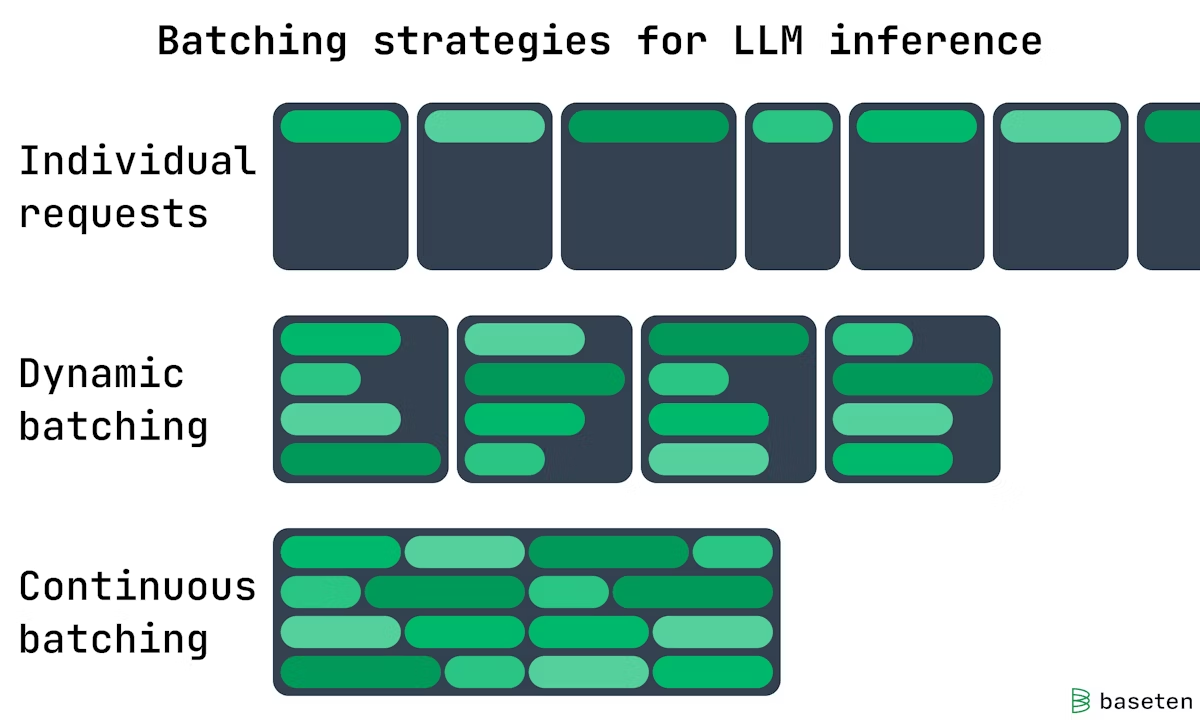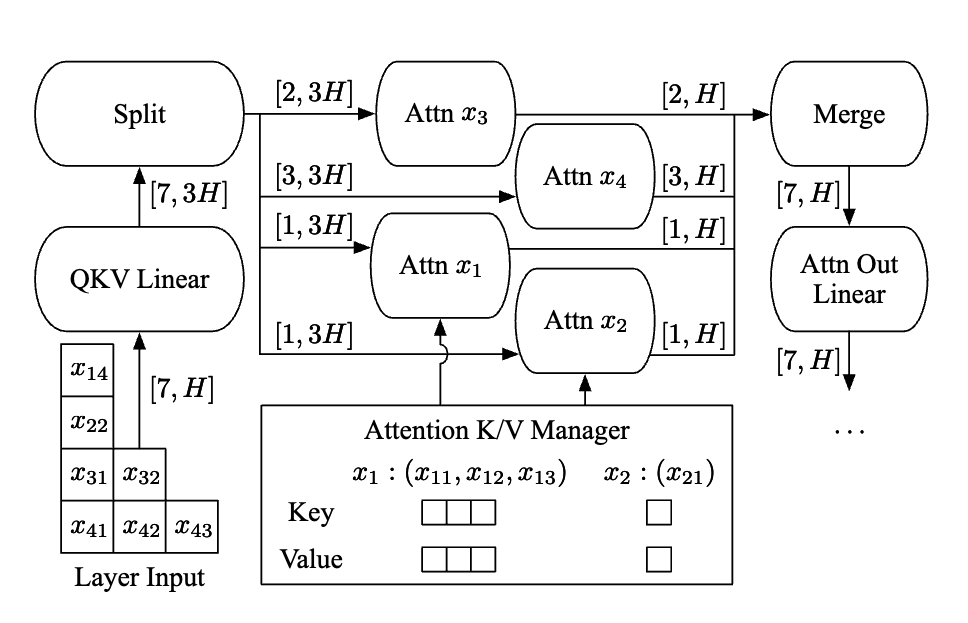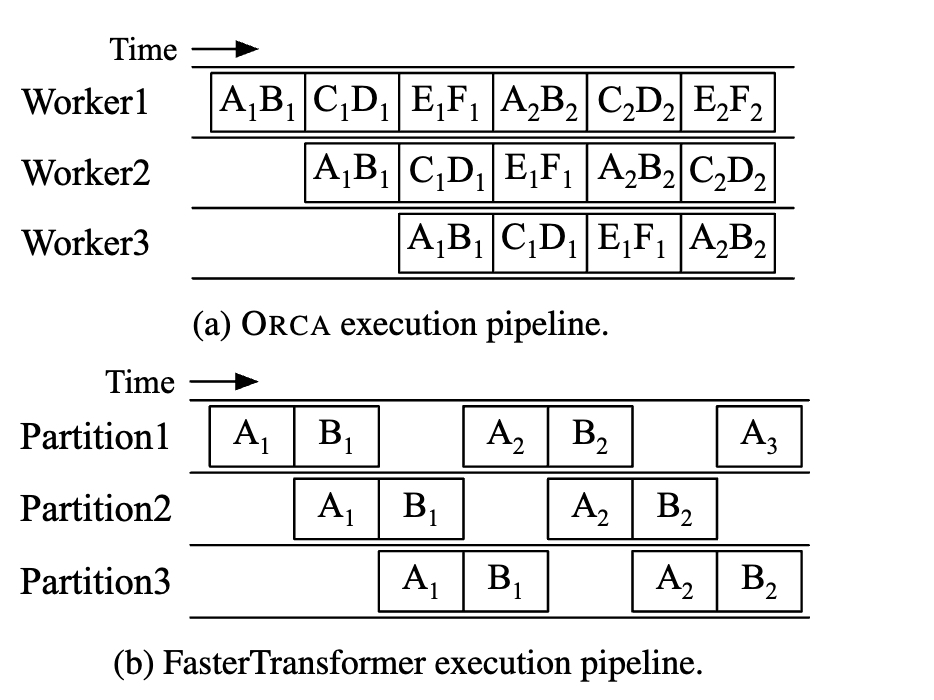Batching

- Continuous Batching: continuous and dynamic gpu memory
- Static Batching: create static gpu memory for each request
batch size: how many user inputs are processed concurrently in the LLM.
Key Design
- Request level scheduling → Iteration level
scheduling
- Resolve: early-finisehd and late-joining requests
- Static Batching → Selective Batching
- Static batching is only applicable when two selected requests are in the same phase, with the same number of input tokens.
- In selective batching, the merged tensor can be fed into non-Attention operations.
- Attention operation requires a notion of requests to compute attention.

Split operation and run the attention operation separately on the split tensor for each request.
The outputs of attention operations are merged back into a tensor by a Merge operation.
Distributed Arch
Each worker is responsible for an inter-layer partition of the model and can be placed on a different machine

- Old: cpu-gpu synchronization overhead for control message transfer
- ORCA: seperate the communication channel for message using grpc
Control plane works in CPU (grpc), Data plane works in GPU (nccl)
Scheduling Alg
Params:
n_workers
max_bs
n_slots: number of K/V slot
# number of requets scheduled
n_scheduled ← 0
# slots used by current scheduled requests
n_rsrv ← 0
while true do
batch, n_rsrv ← Select(request_pool, n_rsrv)
schedule engine to run one iteration of the model for the batch
foreach req in batch do
req.state ← RUNNING
n_scheduled ← n_scheduled + 1
if n_scheduled = n_workers then
wait for return of a scheduled batch
foreach req in the returned batch do
seq.state ← INCREMENT
if finished(req) then
n_rsrv ← n_rsrv - req.max_tokens
n_scheduled ← n_scheduled - 1
def Select(pool, n_rsrv):
batch ← {}
pool ← { req ∈ pool | req.state ≠ RUNNING }
SortByArrivalTime(pool)
foreach req in pool do
if batch.size() = max_bs then
break
if req.state = INITIATION then
new_n_rsrv ← n_rsrv + req.max_tokens
if new_n_rsrv > n_slots then
break
n_rsrv ← new_n_rsrv
batch ← batch ∪ {req}
return batch, n_rsrv- variable number of requests can be batched in selective batching
- FCFS scheduler
Selectfunction selects a batch and there can be at mostn_workersbatches running in distributed orca system
